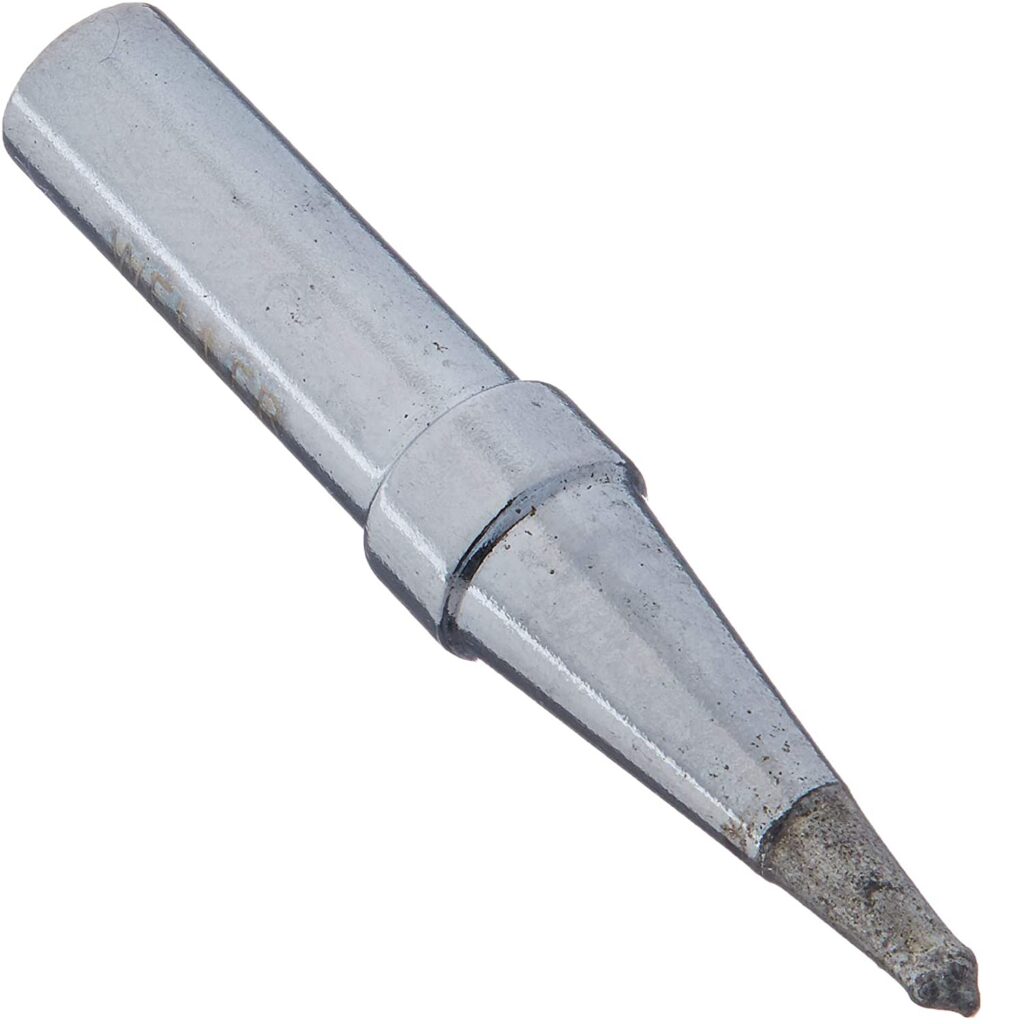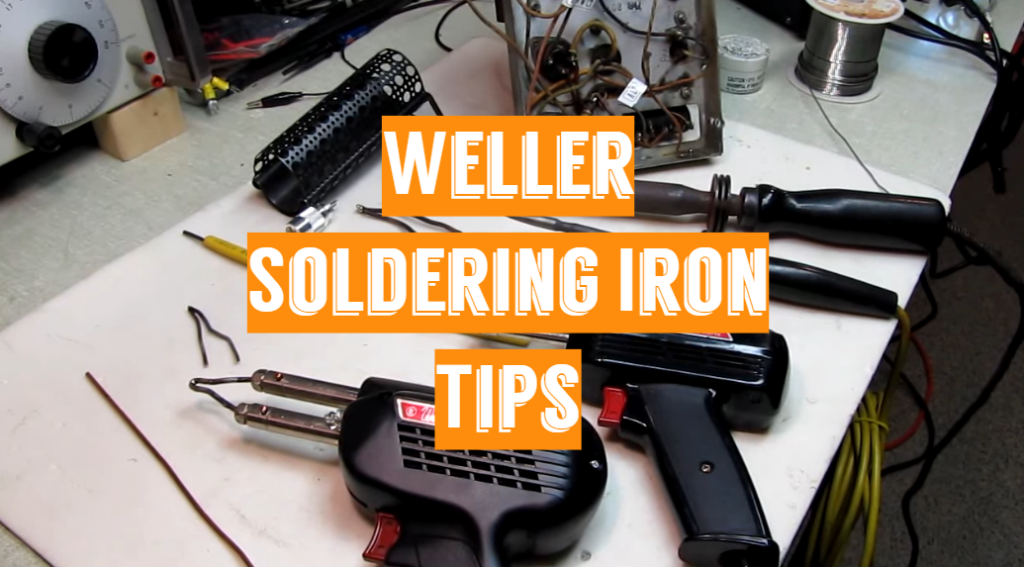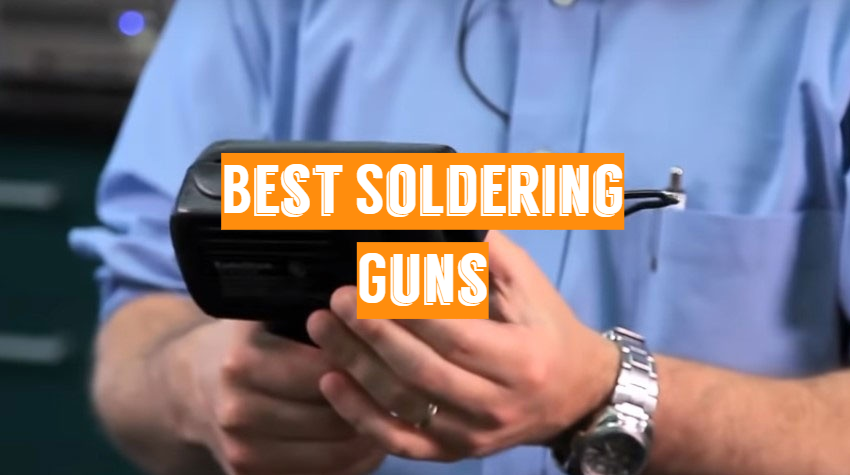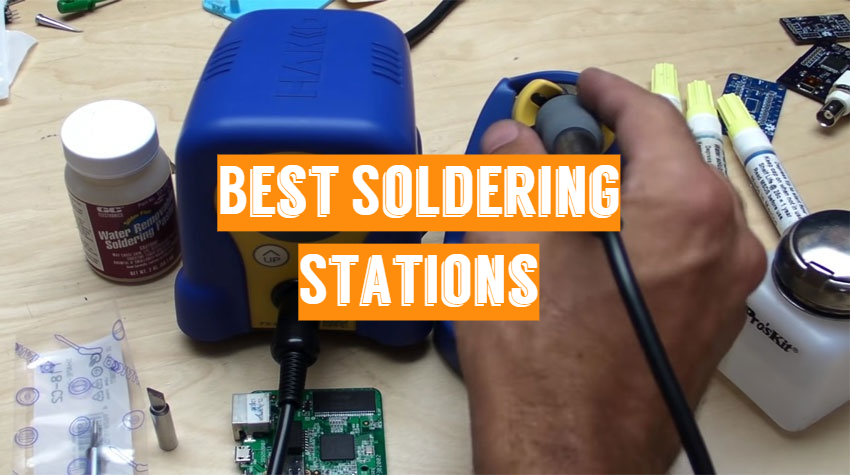




Choose the Best Weller Soldering Iron Tip
[modalsurvey id=”376243124″ style=”flat”]Customer’s Choice: the Best Rated Weller Soldering Iron Tips
[survey_answers id=”376243124″ style=”plain” data=”score”] users answered this survey. Please help us improve this review!
[survey_answers id=”376243124″ style=”piechart” legend=”true”]
If you need to buy genuine Weller soldering iron tips, this guide can be quite helpful. It is essential to choose top-notch tips for your Weller soldering iron when you need to get perfect solder joints. Bear in mind that genuine Weller tips are specifically suited to the diverse Weller heating device, which only provides the finest quality welding joints to be made.
Pros of genuine Weller soldering iron tips:
- Very cost-effective;
- Many size and diameters;
- Premium quality;
- They use silver for conducting heat;
- Stable heat delivery;
- All genuine tips come with the Weller warranty;
You are immediately guaranteed to be working with the new and best equipment in the soldering industry when utilizing genuine Weller components. In order to deliver the ultimate solder tip, the Weller R&D team is actively researching and creating new techniques. For our respected clients, their actions result in massive reductions in time and running costs.
Generally, the buying guide and comparison table are recommended for new users who’ve never tried the product before. In this case, all these expert recommendations and specifications will be useful for everyone who is somehow related to soldering jobs.
Weller ST7 ST Series Solder Tip – the best for compatibility!
 The ST7 ST series offers hobbyist-ready 0.31-inch tips for WP25, WP30 and WP35 soldering irons. These ground copper tips are tinned with a high-quality lead-free alloy (chromium, nickel and iron) at the factory.
The ST7 ST series offers hobbyist-ready 0.31-inch tips for WP25, WP30 and WP35 soldering irons. These ground copper tips are tinned with a high-quality lead-free alloy (chromium, nickel and iron) at the factory.
The conical tips are recommended for small-to-medium jobs. To do the work, the tip had a fine sufficient point.
This Weller TL7 tip is especially selected as a hobbyist product for the Weller WLC100 station, not a technical gadget. To assure a steady temperature, Pro models have interchangeable cords and temperature sensor feedback. This could be a fantastic tip for soldering iron that an electronics hobbyist may get.
Pros
- Common conical shape;
- Pre-tinned;
- Durable;
- Compatible with many different soldering irons;
Cons
- Doesn’t heat easily;
- The tinning falls off after 1 month;
Without first having to maintain it with flux, the tip will take solder for staining. Such Weller tips enable small component tasks to be performed. For instance, you may use it for soldering circuit boards.
Weller ETP Conical Soldering Tip– the best for the length!
 This ETP conical tip is one of the longest tips in the Weller lineup. With the small amount of suitable soldering irons, it is a perfect fine-pointed tip. The tip takes 30 seconds of heat to melt the solder if the proper solder product was picked.
This ETP conical tip is one of the longest tips in the Weller lineup. With the small amount of suitable soldering irons, it is a perfect fine-pointed tip. The tip takes 30 seconds of heat to melt the solder if the proper solder product was picked.
The E-series tips are even stronger, they maintain their cleanliness better and appear to heat up faster than the cheaper price of other Weller lookalikes.
Pros
- Long;
- Heats up in 30 seconds with compatible solders;
- Tinning is great;
Cons
- Expensive;
- Limited compatibility;
- Needs regular cleaning;
For operating on small electronics, this lengthy tip might be suggested.
Weller MT1 Conical Tip – the best for the replacement!
 This universal conical tip Weller MT1 is built for unique applications that provide optimum versatility. The freshly improved power-response tech maximizes the efficiency of soldering on the most responsive to the most complex applications.
This universal conical tip Weller MT1 is built for unique applications that provide optimum versatility. The freshly improved power-response tech maximizes the efficiency of soldering on the most responsive to the most complex applications.
It offers a perfect balance between regulation of force, reaction, and temperature. The lower tip costs often render this unique technique the most appealing approach built to reach the highest market expectations for top quality skilled welding.
Pros
- Good replacement tip;
- Budget-friendly;
- Durable;
Cons
- Limited compatibility;
- Won’t work with the soldering irons that have set screws;
Compatibility with the highest-power soldering iron is one of the greatest bonuses. It is suitable for applications such as RF shields or LED back-panels with the maximum mass use.
Weller ST5 Sloped Tip– the best for recovery!
 The ST5 sloped tip uses the genuine Weller tech for ultra-precise temperature control and heating. This tip was originally developed for micro-soldering jobs using a variety of Weller soldering irons.
The ST5 sloped tip uses the genuine Weller tech for ultra-precise temperature control and heating. This tip was originally developed for micro-soldering jobs using a variety of Weller soldering irons.
Even at only a marginally higher tip speed, the completely optimized tip provides the quickest recovery on the U.S. market for fine tips.
This tip also helps you to apply the iron with much greater versatility in the selection. Your vision is far less blocked, creating greater freedom and accuracy. Moreover, the solder holds it very well.
Pros
- Sloped tip;
- Good for micro-soldering jobs;
- Affordable;
- Fast recovery time;
- Ultra-precise;
Cons
- The shape issues are possible;
If you need to solder and desolder really tiny SMD bits, this tip may be a reasonable option – think of gamepads, headphones, etc.
Weller ETA Soldering Tip– the best for the price!
 The Weller ETA soldering iron tip has the smallest diameter. That is why you should pick it only for micro-soldering jobs. Despite the size, this tip is pre-tinned with a lead-free alloy (copper, iron and chromium).
The Weller ETA soldering iron tip has the smallest diameter. That is why you should pick it only for micro-soldering jobs. Despite the size, this tip is pre-tinned with a lead-free alloy (copper, iron and chromium).
Besides, it is one of the most budget-friendly Weller soldering tips so you can buy a few items for replacement.
[tds_info]Tips for users: Simple cleaning with just a dry wipe.[/tds_info]
Pros
- The best price;
- Easy cleaning;
- Pre-tinned;
- Good for micro-soldering jobs;
Cons
- Won’t work with 60/40 solders;
- Only high temperature;
After several contacts, it goes high and conducts the heat as you anticipate. The tip is completely compliant with any solder without lead. At 750F, it does well.
The Buyer’s Guide
Choose the proper type of a soldering iron tip:
Chisel (sloped) tips for common tasks. They are possibly the most popular tip style, and for many soldering activities, they are a flexible form. Chisel tips have a broad edge that helps them to uniformly spread heat through part leads and pads.
There are numerous applications where a suitable match for the work is the chisel edge. For most chisel tips, the tapered edge helps it to get between the components when required. They function great for cables, pass-through links, wider parts for surface mounting, and several connections on board.
When paired with a method for cutting the material, a chisel tip is often effective for many desoldering activities. Ideally, without overheating the materials, the tip can be scaled to accommodate the pad it is soldering. For a chisel edge, striving for 60 percent of the pad size or just over half is a decent rule of thumb.
Weller has an array of chisel tips appropriate for a large variety of applications. We’ve got fine, curved, long reach, and nice twisted chisel tip types. The bent models are accessible at angles between 30 and 60 degrees, suitable for your use.
Conical tips for precision. They have a pointed shape and are mostly used for precise applications of soldering. The cone-shaped tip supplies a given limited area with intense heat, making it well equipped for most surface-mount parts and other light jobs.
The design of any cone tip by Weller enables the conical soldering tip to get into areas that would be impossible for other tips to enter. For this purpose, keeping a conical tip is useful when you need to reach tight places.
When using a conical edge, beginners or anyone new to soldering should use care. The sharper points are more vulnerable to harm than other tip designs, so they need to be closely treated. Many beginners prefer to add a lot of force to the soldering point, which could hurt both the edge and the job on a conical tip.
Conical tips are also applied in space-tight wire connector applications. The shape of the tip helps it to meet where most tips can be too wide to fit into the connector.
Weller houses a variety of conical tips in styles of fine, curved, broad distance, and fine bent. For your ease, conical angles are required at both 30 and 60 degrees.
Proper size and diameter
By picking the appropriate size/diameter of a soldering iron tip, then such benefits should be expected:
- Efficient heat transfer;
- Good wetting for solder joints;
- Longer life of the tip;
- Decreased operating costs;
You must understand the size/area of the land/pad where the tip may touch in order to choose the correct size/diameter tip. If the surface region between the tip and the ground/pad is maximized, heat can be transmitted more easily than if you had a reduced contact area.
But what if the correct size tip can not be used because there is no room? You may need to find a tip in that situation that will suit the small room in which you have to operate, so it is better to make sure you use a tip that only works.
Going so little won’t heat up effectively. It is therefore best to take into consideration the usage of PCB preheating. This allows to “preload heat energy” into the PCB and components so that in a shorter period than if the same procedure was performed without preheating, the minimal heat transfer from an underpowered tip will achieve the required temperatures for quality soldering. It has also been demonstrated that nitrogen soldering adds to the solder joint’s preheating that can improve the solder’s wettability.
How to identify genuine Weller iron tips?
- Look for the label “Genuine Weller Seal of Quality”;
- The genuine tips are engraved with the Weller logo;
- High-quality copper tips;
- Universal uses – from the most delicate to the most difficult jobs;
- Fast heating up;
How to prolong the use of Weller soldering iron tips:
- Tin your tips with a thin layer of solder. The tip will look shiny and become more durable;
- Pick only premium solder, preferably lead-free products. If it is not possible, some experts recommend picking the solder products with the 60/40 ratio of tin to lead;
- The melting temperature should correspond to the solder content. 60/40 solder products require a temperature level of 460F. While lead-free solders need about 700F;
- Keep the tips neat and clean;
- To treat oxidization you should use flux in a liquid or paste form;
- If the tips got darker, you may re-activate them by using a top-notch reactivation paste with abrasives. You just need to place the tip inside the jar with this paste. Hold until the tips become shiny;
- Do not store the tips just in the drawer/box with other metal tools. Secure them separately in a durable case;
Video Tutorial: Homeade Weller soldering gun tips DIY
Final thoughts
There are several various kinds of Weller tips in addition to the mentioned models, each with their special advantages and disadvantages. Nevertheless, for most jobs, the 5 tip forms mentioned above should be appropriate, and to be frank, you might select one design of the tip and stick to using it for all your various ventures. However, it is more effective to choose something appropriate for just what you’re focused on.



